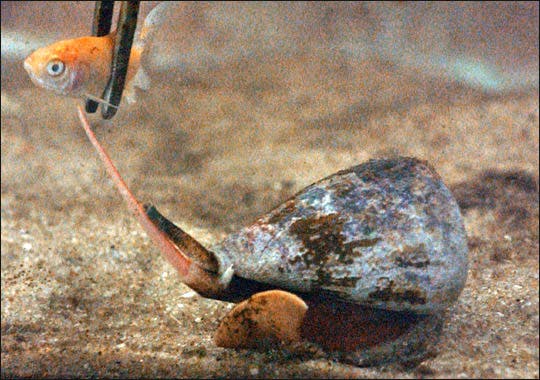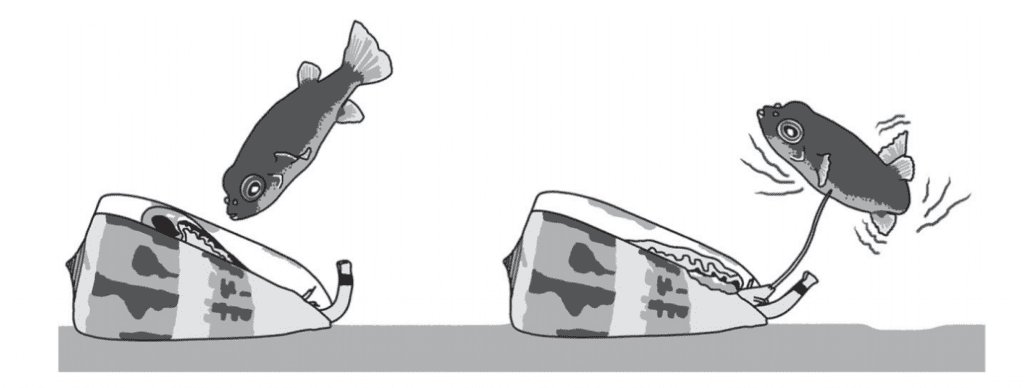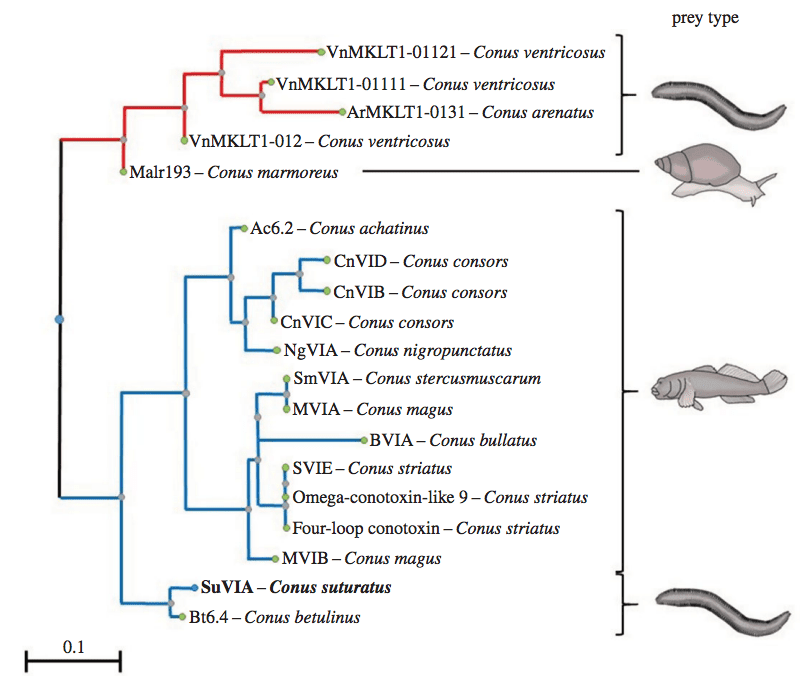Cone snails have one of the most dangerous venom in the animal kingdom. This complex venomous soup is made up of thousands of chemicals used both to hunt prey and ward off predators. The venom is enough to kill a human in a matter of minutes. Now, these lethal chemicals could be used to create a new class of painkiller for chronic pain and cancer patients undergoing chemotherapy, according to University of Queensland researchers. The same team also used a genetic and proteomic to find out how the cone snails developed its venom. Apparently, the animals initially used their chemical weaponry as a defense mechanism and later on adapted it into an attack.

Thousands of peptides (mini-proteins) called conotoxins make up the cone snail venom. Different conotoxins can be found in every Conus species.
The cone snails are quite diverse, too. Some hunt slow-moving worms or other snails, while other species attack fast-moving fish. This is quite a difference. Previously, researchers found cone snails produce and use different venoms for attack and defense. The attacking type is made at the end of the venom duct, while defense venom at the other end. So, by studying the toxins of stunned prey, researchers can tell whether the snails attacked or warded off.

Particularly, to catch fish, the fast-prey hunting cone snails use delta-conotoxins. These toxins stop nerve signals in their tracks and cause quick and deadly paralysis. The reasoning was that cone snails that hunt slow-moving prey have no need for d-conotoxins. Using novel genetic techniques, however, the team from University of Queensland and Université Montpellier found d-conotoxin (d-SuVIA) in the venom of the worm-hunting Conus suturatus. They also discovered 11 other novel d-conotoxin-like sequences from other worm-eating cone snails.
Moreover, these toxins were produced in the venom duct for defense purposes. So, what gives? Well, when the researchers injected the toxin into mice, the mice displayed behaviors consistent with intense pain. As we know, pain is a great mood killer for predators. More plainly, these conotoxins – though heavily used by modern species to kill fish – weren’t initially developed to attack, but to stun and scare predators away.
“We propose that defensive d-conotoxins were originally used by ancestral worm-hunting cone snails to protect against threats such as cephalopod and fish predation,” the authors write in Proceedings of the Royal Society B, “and have been repurposed for fish-hunting.”

The study delved deeper than ever before in the cone snail venom chemical and biological makeup. Professor Paul Alewood, from UQ’s Institute for Molecular Bioscience, said the team used biochemical and bioinformatics says the findings could be used to develop a new framework that might produce new painkillers. There are 25 known frameworks discovered over the past 25 years, many of which have already led to a drug or drug lead for several diseases.
“Cone snail venom is known to contain toxins proven to be valuable drug leads,” he said.
“This study gives the first-ever snapshot of the toxins that exist in the venom of a single cone snail.
“Cone snail venoms are a complex cocktail of many chemicals and most of these toxins have been overlooked in the past.”
“We expect these newly discovered frameworks will also lead to new medications, which can be used to treat pain, cancer and a range of other diseases.”
Was this helpful?



